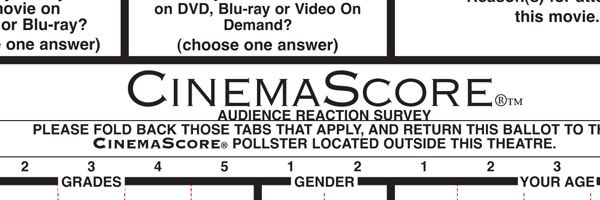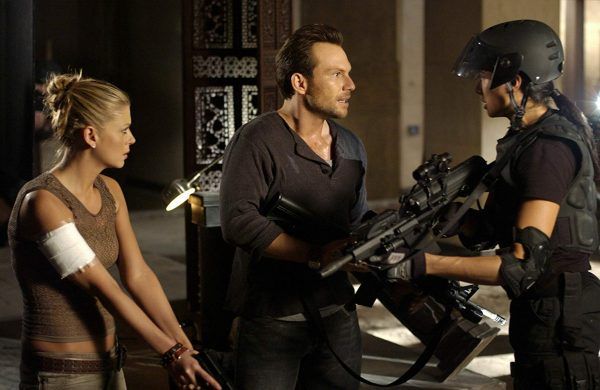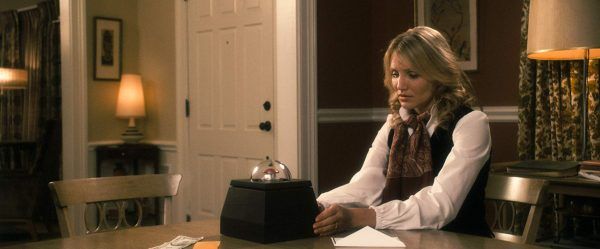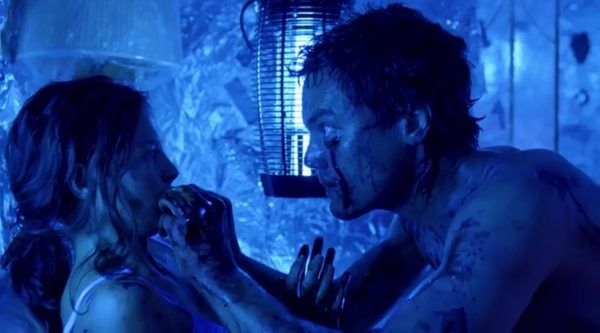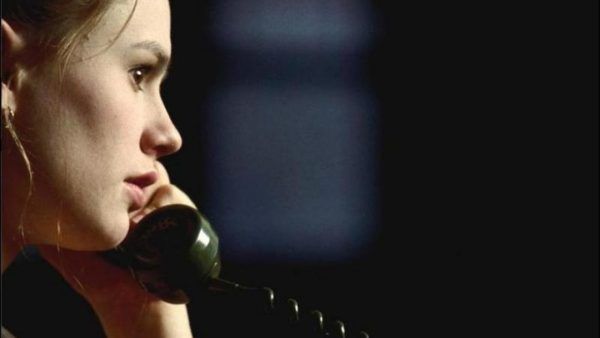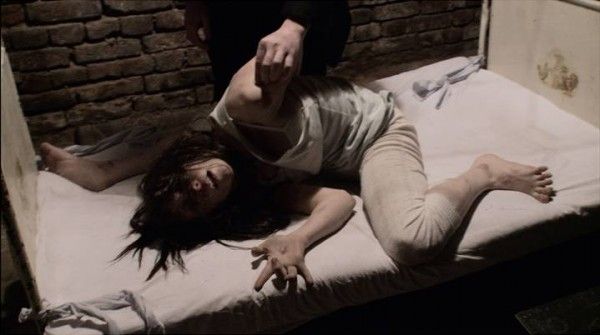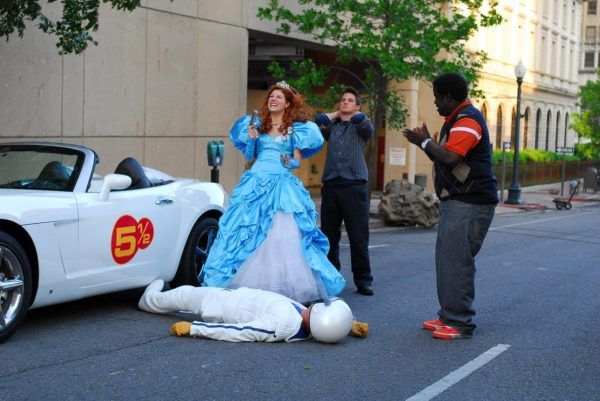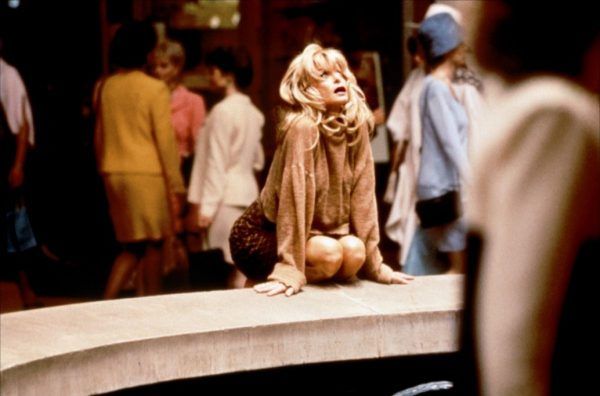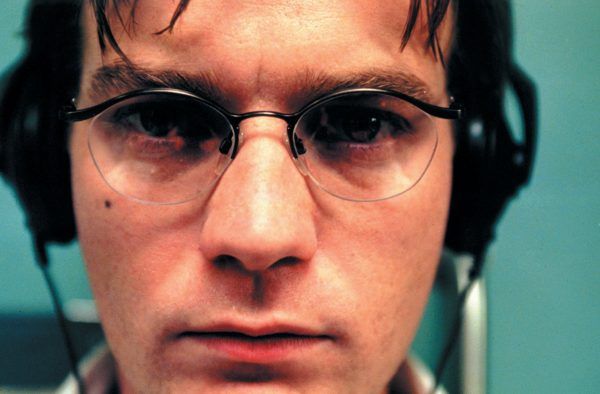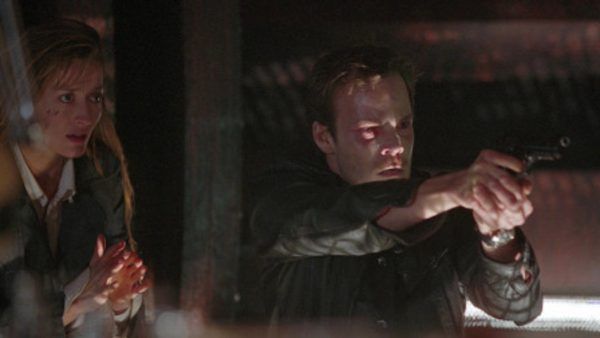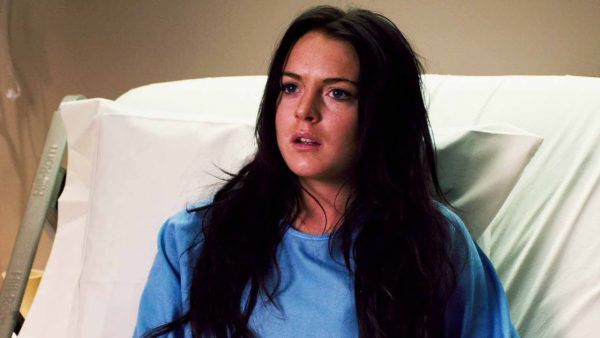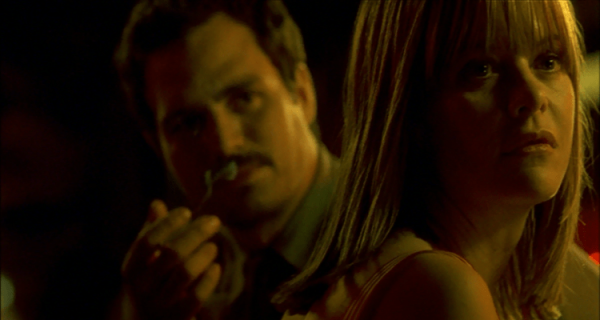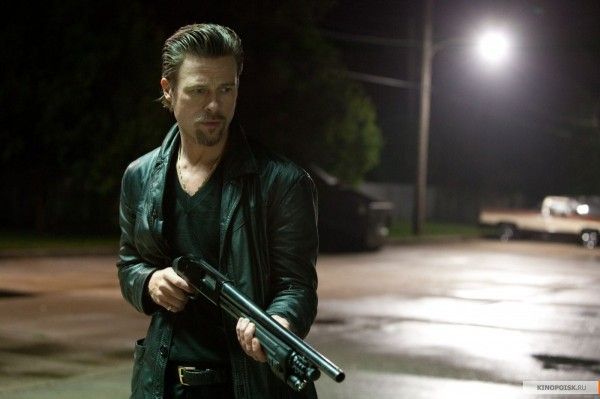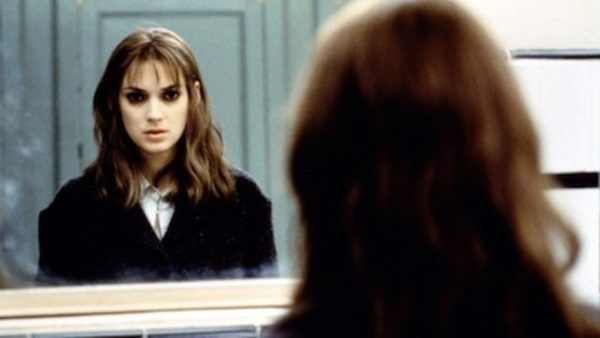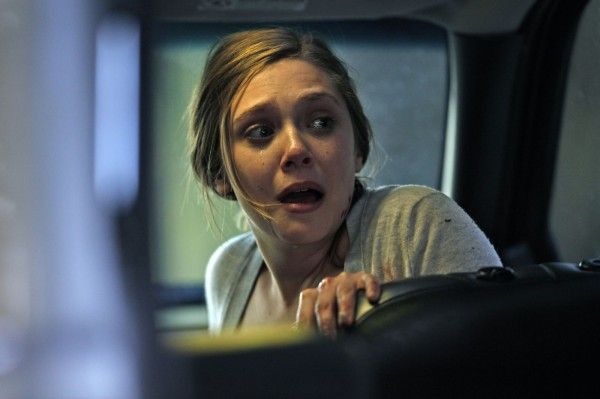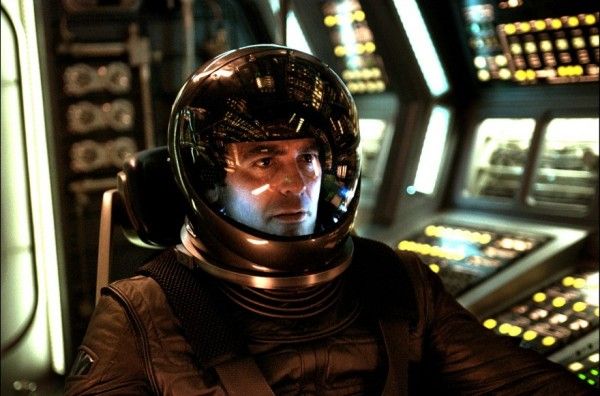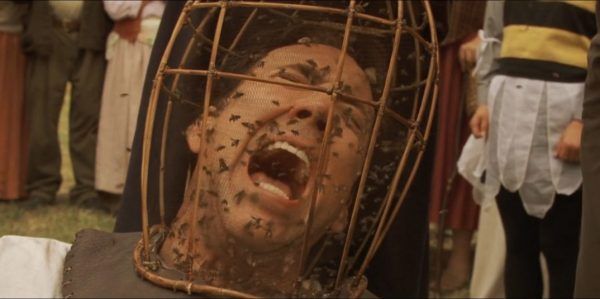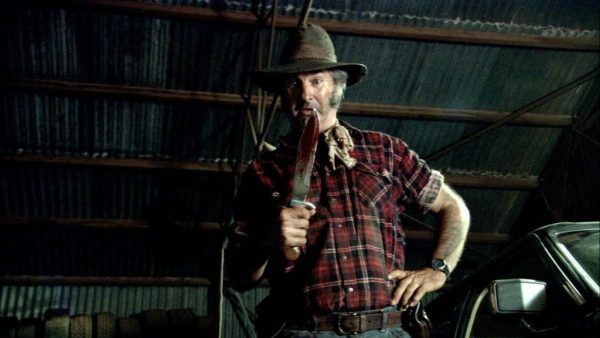CinemaScore is a Las Vegas-based market research firm that polls audience members of the most recent theatrical releases and then shares that data alongside the weekend’s box office receipts. Is it kind of goofy and stupid? Yes. But it goes a long way in showing how the box office is connected with the everyday sentiments of American moviegoers and how large the gulf can sometimes be between the critical consensus and the commercial masses. Only 21 films have ever gotten an “F” CinemaScore rating, which is a testament to how forgiving these audiences are (it’s like they didn’t even watch Men in Black International), and how polarizing the films that received these grades could be. It’s with this in mind that we look back at the bottom of the CinemaScore barrel, to the 21 films that ever received that scarlet letter.
Alone in the Dark (2005)
It’s sort of surprising that only one movie made by Uwe Boll, that charmless schlock-master who makes Ed Wood look like Orson Welles, is on this list. But then again most of his movies are direct-to-video abominations that skip a theatrical release altogether. How Alone in the Dark was released publicly (by the fairly reputable Lionsgate, no less) remains a genuine mystery more gripping than anything presented in the actual film. Based, like many of Boll’s films, on a popular videogame, it features a pre-Mr. Robot Christian Slater as a hardboiled gumshoe (are there any other kinds?) investigating some occult weirdness. (A mid-meltdown Tara Reid and surprisingly engaged Stephen Dorff co-star, both clearly happy for the work.) All the hallmarks of a Boll blunder are present and accounted for: blurry visual effects, muddy camerawork, confusingly staged action than major Hollywood film. Alone in the Dark is one of the films that definitely deserves to be here. Also, bonus trivia: it inspired a sequel that didn’t bring back Boll or any of the cast. Seek it out … if you dare.
The Box (2009)
Many of the films on this list are purposeful provocations; they dare you to like them. The Box is one of those movies. And, full transparency, I love this movie. Writer-director Richard Kelly (Donnie Darko) adapted a Richard Matheson story from 1970 that was previously adapted into a Twilight Zone episode in the 1980s about a mysterious box that offers you $1 million if you push the button inside but the catch is … somebody dies. Spooky enough, right? The original story (and to an extent the episode) worked well due to its chilling simplicity, something that Kelly flagrantly disregards, in favor of a plot stuffed with a potential alien invasion, a NASA conspiracy and a disfigured Frank Langella who came back to life after being struck by lightning (don’t ask) and a subplot about Cameron Diaz’s missing toe, all set to an unrelenting Arcade Fire score. The joy in The Box is watching all the points where Kelly could have given in and created something entertaining and instead veered in the opposite direction towards something more interesting and, to most moviegoers, aggravating.
Bug (2006)
Bug is another purposefully provocative oddball, based on a searing, decade-old play by Tracy Letts and directed, with optimum seediness, by The Exorcist filmmaker William Friedkin, who has basically made a career out of being purposefully provocative. Almost the entire movie is set in a rundown motel room where a couple of lowlifes (Ashley Judd and Michael Shannon in fearless performances) do drugs and eventually become convinced that bugs are in their room and eventually their bodies. This is a movie designed to make you squirm, so it’s not exactly a mainstream marvel. Also, it was marketed, at the height of Hostel, as some kind of torture porn romp. Instead, it’s probably closer to the body horror of David Cronenberg – and even that is a stretch. When a movie makes you want to take a shower immediately afterwards, it’s going to be hard to clear that “F” rating.
Darkness (2004)
It’s easy to understand the commercial indifference towards Darkness when you look at the film’s rocky path to theaters. Originally released in Spain in 2002, it finally debuted in American multiplexes more than two years later, by which time it had been heavily edited and reconfigured by the Weinstein Company. So whether or not the movie made more sense (and had more pep) when it was originally released remains to be seen; as it was released, Darkness was sluggish and unengaging, wasting a killer premise (a family moves into a house where, decades before, a horrifying occult ritual had been conducted) and a great cast (Anna Paquin and Lena Olin are amongst the performers). Maybe this one would have been better off getting lost on the way to its domestic release.
The Devil Inside (2012)
What was originally configured as a more straightforward horror film was, after Paranormal Activity became a blockbuster, re-engineered as a found footage chiller. It’s unclear if it would have been a better film as it was initially envisioned, because the resulting movie is pretty lousy and scare-free, so you can see why audiences would agree. Also, the movie ends with a title card directing people to go to a website for the full ending. Oddly enough, director William Brent Bell would go on to make a sleeper hit in STX’s The Boy, a dumb movie that was at least popular. (He’s got a sequel coming out this December.) You’d probably have to be possessed to get a kick out of The Devil Inside.
Disaster Movie (2008)
Some of the movies on this list you have to ask yourself, Well, what were they thinking? Disaster Movie, one of a string of lowest-common-denominator spoof movies by the writing/directing team of Jason Friedberg and Aaron Seltzer, is one of those movies. Ostensibly a lampoon of disaster movies, which weren’t even particularly en vogue at the time, it begins with an opening sequence that contains a gag mocking 10,000 B.C. (a movie nobody even saw in the first place), a reference to Indiana Jones and the Kingdom of the Crystal Skull and a boozy caricature of Amy Winehouse (in the years since it’s gone from being dumb to being in astoundingly bad taste). From there it gets even worse. Slapdash and truly unfunny, you sort of have to blame the people who bought a ticket for this one. It’s as if they were mad about how the movie turned out, knowing full well what they were getting into.
Doctor T and the Women (2000)
Listen, Robert Altman made a lot of movies and not all of them were modern masterpieces. Doctor T and the Women, starring Richard Gere as a posh Texas gynecologist, was marketing as a fun and frothy comedy, but the resulting movie was sillier and way more chaste that you could have ever imagined. (This is the same guy who made Short Cuts?) It’s unclear what rubbed audiences the wrong way about the movie, but the movie, despite its ridiculously starry cast (Helen Hunt, Farah Fawcett, Laura Dern, Shelley Long, Tara Reid, Liv Tyler and Kate Hudson are the titular women), is lame and feels hopeless out-of-date. Thankfully, the legendary filmmaker would rebound big time the following year with the Oscar-nominated Gosford Park, seen by many as a late-career triumph, so it all worked out.
Eye of the Beholder (1999)
Emotion definitely comes into play when assigning a movie an “F” Cinemascore. Anger, frustration, sadness, disappointment; these are the emotions that undoubtedly govern such a grade. But when it comes to Eye of Beholder, that emotion was surely befuddlement. A rococo thriller by Stephan Elliott the flamboyant director of The Adventures of Priscilla, Queen of the Desert, Eye of the Beholder was sold as a straightforward thriller but what audiences got was way, way weirder. Ewan McGregor plays a spy who becomes obsessed with a comely serial killer (Ashley Judd, making her second appearance on this list) to the point where he keeps saving her and allowing her to kill more people. This is a movie where “magical realist” flourishes (like McGregor having imaginary conversations with his estranged daughter) are piled on top of sequences of grimy unpleasantness (Jason Priestley plays a scummy bleach-blonde drifter who injects Judd with heroin and causes her to miscarry). The movie has a dreamy internal logic, which makes it acceptable for, say, k.d. Lang to show up for some reason or for Geneviève Bujold to be slathered in old-lady make-up as a weird psychologist. Admirable for its ambition if not its execution, Eye of the Beholder is also notable for being the very first film to garner an “F” Cinemascore.
Fear Dot Com (2002)
The internet! Isn’t it scary? This was basically the conceit behind the braindead Fear Dot Com, a movie that tried to turn millennial angst into actual horror but wound up just being terrible. Directed by William Malone, a schlocky filmmaker who a couple of years earlier had helmed the somewhat enjoyable The House on Haunted Hill remake, it was likely an attempt to not only cash in on the Internet crazy but to also fashion a movie like Japan’s The Ring, in which technology is given a supernatural power and the ability to drive people insane. Instead of a cursed videotape, though, it’s a haunted website, which we later learn is connected to a serial killer being hunted by Stephen Dorff’s dogged NYPD detective. (And, yes, this is also Dorff’s second appearance on this list.) At once too phantasmagorical and too grounded, Fear Dot Com attempted to capture the zeitgeist but, judging by that grade, ended up alienating audiences instead.
I Know Who Killed Me (2007)
Largely considered one of the worst movies ever made, I Know Who Killed Me was a film that proudly earned its “F” Cinemascore. In fact, it’s inconceivable how anyone would give it a rating of anything more than “F,” it’s so insipid and unnecessarily violent and poorly made. If you haven’t seen I Know Who Killed Me which is a distinct possibility because we’re more than ten years removed from it and it has thus lost its “OMG you have to see how bad this thing is” power, it stars a mid-meltdown Lindsay Lohan, who plays two characters, one is a pianist and the other is, of course, a stripper (she wiggles around a lot but never actually strips). How they’re connected to a rampaging serial killer is both too convoluted and too stupid to explain, but the movie absolutely sucks. Winner of eight (!) Golden Raspberry awards, it’s a movie of flabbergasting ineptitude.
In the Cut (2003)
A psycho-sexual thriller directed by Oscar winner Jane Campion and produced by Nicole Kidman, it’s easy to see why the messy movie was off-putting to audiences. For one, its graphic sexuality had to be cut in order for it to secure an R rating (the scenes were reinstated for an unrated home video release) but was still pretty raw; maybe seeing America’s sweetheart Meg Ryan fully nude was too much for some people. But honestly the movie’s extreme sexual content (never good for America’s largely prudish audiences) was only half of what made In the Cut faulter. Also, the mystery was incredibly dumb (the big reveal is a forehead-smacker for sure) and brought down a lot of great actors (in addition to Ryan, Mark Ruffalo, Jennifer Jason Leigh and Kevin Bacon are all brought down in the muck). Not every critic hated it (some have hailed it as a mini-masterpiece) but the audience at the time did.
Killing Them Softly (2012)
Andrew Dominik is the kind of filmmaker who makes movies that are initially dismissed but appreciated down the line. This happened with his last classic, The Assassination of Jesse James by the Coward Robert Ford, and it’s starting to happen with this film, Killing Them Softly, ostensibly a crime caper about a rigged card game, but also a searing, vitriolic look at American politics. (The entire movie takes place around the pivotal 2008 United States Presidential election.) Brad Pitt, in perhaps his scuzziest role to date, is a killer brought to town to clean up following the card game being robbed. Most of the movie is made up of Pitt rambling around town, as he engages with all sorts of colorful lowlifes (including James Gandolfini in one of his final performances) and deals with the bureaucratic machinations of the mob (which are pointedly mirroring both American big business and the political system). Gorgeously photographed and languidly paced, it’s easy to see how it garnered such mainstream agitation. Some “F” scores are a warning, but with Killing Them Softly, it’s a badge of honor.
Lost Souls (2000)
Since 1993, cinematographer Janusz Kamiński has been one of Steven Speilberg’s closest collaborators, delivering dazzling visuals time and time again. But when he embarked on his directorial debut, the soggy supernatural thriller Lost Souls, he struck out big time. Delayed two years due to post-production woes and a glut of similarly themed apocalyptic dramas, Lost Souls stars Winona Ryder as a member of a covert Catholic sect convinced the Anti-Christ is on the way (and set to inhabit the body of a dreamy Ben Chaplin). Overwrought and underwhelming, the movie is neither as scary nor as interesting as it probably should be, and even compared to other like-minded horror movies of the period (like End of Days) it comes up short. Audiences agreed, rightfully assessing it as being too little, too late.
Lucky Numbers (2000)
It’s surprising that Lucky Numbers made this list, not because it’s some lost masterwork, but because it’s simply okay and it’s easy to imagine it’s shrugging mediocrity providing cover for the out-and-out hatred such a rating suggests. John Travolta, in the beginning of his decline, plays a scheming weatherman and snowmobile salesman who gets in over his head and decides to rig a local lotto giveaway. Despite some occasionally sharp staging by Nora Ephron (directing, for the first time, a screenplay she didn’t write herself) and some surprisingly zippy performances (particularly by Lisa Kudrow as Travolta’s dim-witted partner-in-crime), the movie veers to some uncomfortably dark places (there are multiple murders) and virtually every character is unlikable if not outright detestable. It’s easy to see why, if an average moviegoer was leaving the theater, they’d be so unhappy they’d award it an “F,” even if the movie doesn’t quite deserve it.
mother! (2017)
Rule of thumb: if a baby is violently murdered and then eaten, then your movie is probably going to get an “F” Cinemascore. If only Darren Aronofsky, the visionary filmmaker behind Black Swan and The Fountain, had known this before making mother!, then its eventual grade would have probably been less of a surprise. It probably didn’t helpt that Aronofsky chose to put America’s sweetheart (and his then-flame) Jennifer Lawrence in the center of his nightmarish eco-horror movie, putting her through the literal and metaphorical ringer and making every audience member squirm in the process. Unrelenting in its confrontational weirdness, mother! is definitely an acquired taste but it’s also a new classic, a movie that re-contextualizes our impending ecological collapse in the form of a deteriorating romantic relationship (Javier Bardem plays Lawrence’s husband, which is also odd) and a house party gone catastrophically wrong. Paramount sold “Mother” as a you-won’t-believe-this horror movie, but it was also so much more. It’s just that of all the multitudes mother! possesses, being a crowd-pleaser wasn’t one of them.
Silent House (2012)
Again, it’s surprising that Silent House is on the list of movies with the infamous “F” CinemaScore rating because, while it’s easy to see people acting indifferently towards it, hating it feels like a stretch. A hit when it premiered at the Sundance Film Festival, it was quickly snapped up for wide release which isn’t always the best thing when finding a small, independently produced thriller. Star Elizabeth Olsen gives it her all in this supposed-based-on-a-true-story home invasion thriller, filmed to look like a single continuous take (akin to Alfred Hitchcock’s “Rope”) and unfolding in “real time.” Smartly constructed and genuinely scary, the “F” Cinemascore probably has to do with the audiences’ visceral reaction to an incredibly stupid “twist” ending that hasn’t only been done to death in recent years but also doesn’t make a lot of sense in the context of the movie. “F” that movie, then.
Solaris (2002)
It’s worth wondering if Steven Soderbergh had stuck with his original conception for Solaris, his remake of the 1972 Russian classic and a fresh adaptation of Stanislaw Lem’s novel, that it would have made more of an impact. He wanted to make a movie with the heady science-fiction trappings of 2001 and the explicit sexuality of Last Tango in Paris. What he ended up with was a beautiful, transporting, eerie science fiction film (produced by James Cameron, no less) that was also oddly sexless, something that while gorgeous was also hermetically sealed and sterile. It still packs an emotional wallop, but you’ve got to dig for it, something that audiences weren’t willing to do. Again, it probably didn’t help to see George Clooney as an aloof scientist who has to confront the ghosts of his past (most notably his wife, who died by suicide on Earth) while in a space station orbiting some intelligent planet, especially when it was being sold as being from his Out of Sight and Ocean’s 11 collaborator Soderbergh. (There is nothing jazzy here.) Additionally, Solaris was released in a packed Thanksgiving corridor where there were tons of other movies in theaters, so, yes, they seemed to be responding to what they perceived as wasted time, too.
The Turning (2020)
It’s somewhat telling that in 2020 there have been two movies that have received an F CinemaScore in the first month alone. (Before that, the most recent F-receiving film was 2017’s Mother!) The second inductee this year is The Turning, a semi-modern update of Henry James’ The Turn of the Screw (memorably adapted by Jack Clayton for 1961’s The Innocents) that was written by The Conjuring screenwriters Carey and Chad Hayes. And, this is yet another film where the F grade is, if not entirely justified, at the very least understandable. For most of the film it’s a standard girl-trapped-in-spooky-house-with-spooky kids yard, made marginally more bearable thanks to the 90s grunge aesthetic (mostly utilized as an excuse to put a mostly under-utilized Mackenzie Davis in chunky Doc Martens), but completely disintegrates by the end. It probably shouldn’t surprise you that this thing has been sitting on the shelf for years (test screenings began way back in 2018) and that it was once the pet project of Steven Spielberg (it’s telling that the DreamWorks logo appears before the movie even though the shingle has transformed into Amblin Partners), who is now publicly distancing himself from the project. If The Turning shares anything with The Grudge it’s that it doesn’t really even have an ending to speak of; it just kind of runs out of gas. It’s not hard to imagine people rioting ... if anybody saw it at all.
The Wicker Man (2006)
Most Americans have never seen the landmark 1973 British original, which ushered in the sub-genre of “folk horror”. Imagine if they’d known what an utterly perfect film the original is. Would they have petitioned to somehow drop the grade lower than an F? An F- perhaps? Most people know The Wicker Man for its endless memes, mostly the sequences where Nicolas Cage is dressed up as a bear, punches a woman, and gets tortured by what can only be described as a mesh fishbowl filled with swarming bees. These moments of outrageousness punctuate what is otherwise a very boring, uneventful, and outwardly misogynist film that sullies the good name of the original.
Wolf Creek (2005)
Again: you can understand why audiences didn’t warm up to Wolf Creek. Shot on a shoestring budget, this Australian horror movie, based in part on actual events, was fashioned after The Texas Chainsaw Massacre, with an extreme mixture of gritty realism and wall-to-wall gore. Lumped in with the “torture porn” movement at the time, this was even more outré than most of those movies. And while its bleakness is overwhelming and its real-life allusions mostly missed on American audiences, Wolf Creek is a really great little thriller, lean and mean and with an ugly streak missing from most horror movies that often overshadows its more satirical and funny dimensions. (John Jarrett, as the psychopathic killer, seems to be doing an over-the-top impression of stereotypical Australians, which somehow makes his performance even more terrifying.) Despite the lack of love for Wolf Creek here, it was followed up with an even-better sequel (which emphasized the humor over the horror) and a limited television series.

